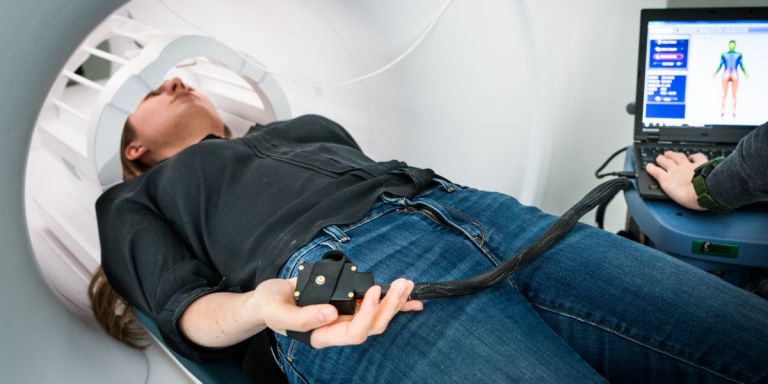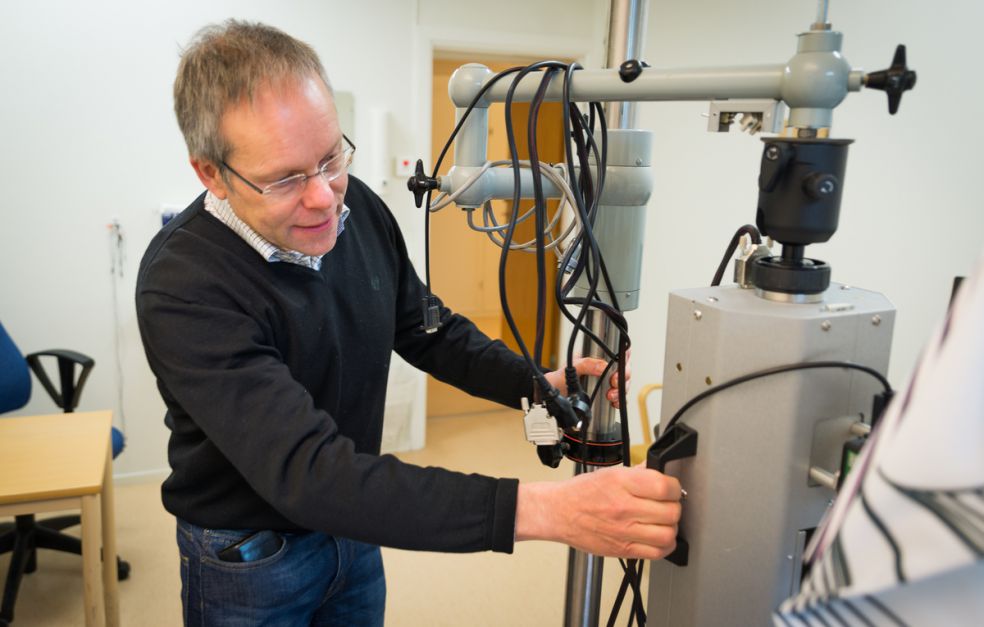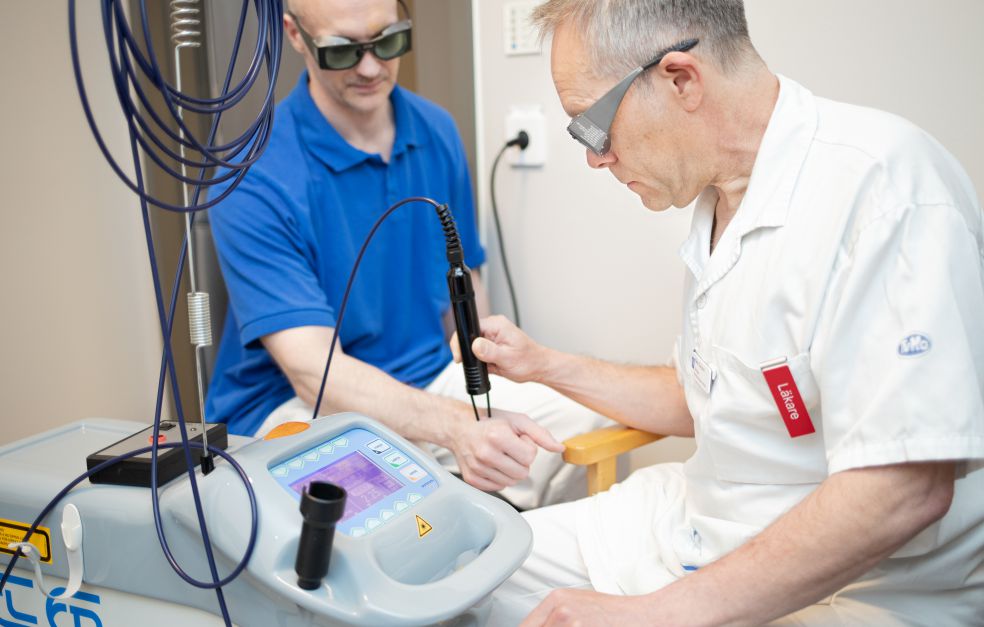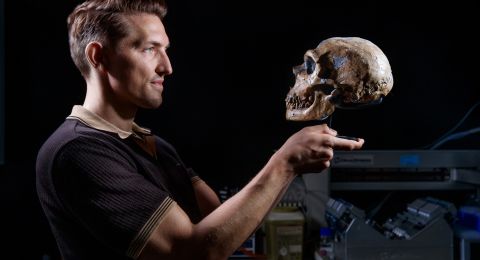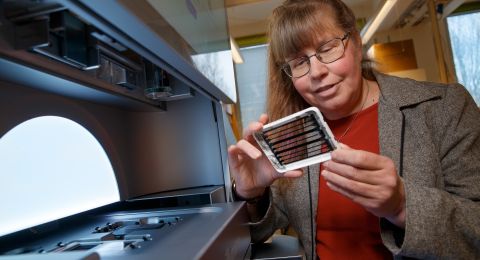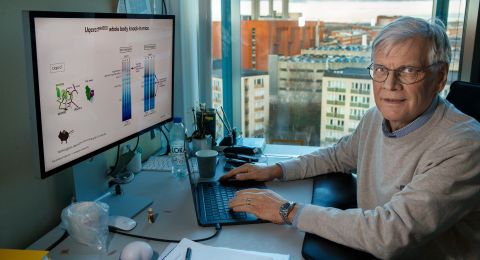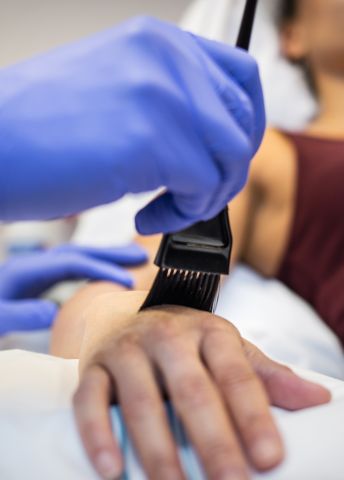
Project Grant 2019
An ultra-fast system for mechanical pain signaling
Principal investigator:
Professor Håkan Olausson
Co-investigators:
Linköping University
Walker Jackson
Max Larsson
Karolinska Institutet
Patrik Ernfors
Uppsala University
Malin Lagerström
Institution:
Linköping University
Grant in SEK:
SEK 34,500,000 over five years
A research team at Linköping University published an article in 2019 showing that humans have a previously unknown high-speed pain signal system. A similar system was already known to exist in other animals, but no one had previously been able to demonstrate its presence in humans. The discovery was made more or less by chance. When the researchers were setting up equipment to measure pain signals, they began with a simpler study to try out the technique.
“We simply measured the conduction speed of all neural fibers. We were really surprised when we realized that some pain receptors operated at the same speed as touch receptors,” says Håkan Olausson, who is a professor at Linköping University.
The prevailing understanding of the nervous system at the time was that pain signals traveled much more slowly than those triggered by touch.
“But most people agree that it ought to be more valuable in survival terms to react more quickly to pain than to touch. But all pain research to date has focused on the slower pain receptors.”
The receptors in the new pain system travel at up to 60 meters per second, whereas the slow ones only move at one meter per second.
Three approaches
The ultra-fast system is now being examined in a joint project involving three research teams at Linköping University, Uppsala University and Karolinska Institutet.
“We know that the slow pain signals travel via a specific route in the spinal cord, but we don’t know whether the ultra-fast ones follow the same pathways. Nor do we know where in the brain the high-speed signals end up. To be honest, all we really know is that they travel very quickly.”
While the research team in Uppsala is concentrating on the pain signals’ pathway to the brain, the researchers at Karolinska Institutet will be gaining a better understanding of pain receptors at cellular level.
Olausson’s team is focusing on understanding the mechanistic properties of the receptors. They will be aided by a Swedish innovation that measures the intensity of pain signals: microneurography. Although the technique was invented in the 1960s, its use remains largely confined to Sweden. A needle measuring 0.2 millimeters is inserted in a nerve to measure the signals that pass. The needle serves as an electrode, enabling scientists to see the intensity of a signal by measuring its frequency.
In Linköping the researchers further refined the approach with the help of ultrasound – used both to find the right nerve, and to help them maneuver the needle in the right way. This is a challenge, since the tiny neurons have a tendency to evade the needle.
“It’s also challenging for the subjects, since they have to sit completely still throughout the five-hour duration of the measurement period. But they typically feel no pain, aside from a sensation of cold when the needle penetrates the nerve.”
One of the aims is to ascertain whether the high-speed system controls reflexes like lifting our foot when we tread on a tack, Preliminary findings are that there is no such reflex if the ultra-fast receptors are blocked.
Experiments entail subjecting the skin to short electric shocks resembling sudden pain. If they trigger the ultra-fast receptors, this will explain the reflex.
Recording the strength of current needed for a reaction may be a new way for researchers to measure pain. Pain is a subjective experience, which is currently measured by asking patients to estimate their pain on a scale of one to ten.
“Our experiments may lead to the development of a complementary way of measuring pain that is not dependent on patient perceptions,” Olausson says.
Impacting inflammation
The research team also wants to find out whether the ultra-fast receptors become more sensitive following an inflammation. Skin can become painfully sensitive to the slightest touch following some inflammations, but the mechanisms are unclear.
“We think the ultra-fast receptors may become more sensitive after an inflammation. This has been demonstrated in experiments on animals, and we want to see if the same applies in humans. If we succeed, we will have identified a completely new mechanism for sensitivity to pain following inflammation, which would be of enormous interest.”
The researchers use a laser to cause a mild burn on the skin. If the receptors become more sensitive, this may indicate they are affected by the inflammation.
They are also aided by a technique called functional magnetic resonance imaging (fMRI), which is used to visualize brain function. This may help them to understand where in the brain the ultra-fast signals are received.
The team has access to groups of rare subjects who lack various receptors due to disease. Some of them cannot feel light touch; others cannot feel pain at all.
“We hope to involve some of them so we can study the function of receptors even more closely. There might be several different classes of pain receptors with distinct functions, but we don’t know yet,” Olausson says.
Text Magnus Trogen Pahlén
Translation Maxwell Arding
Photo Charlotte Perhammar, Thor Balkhed Linköping University
